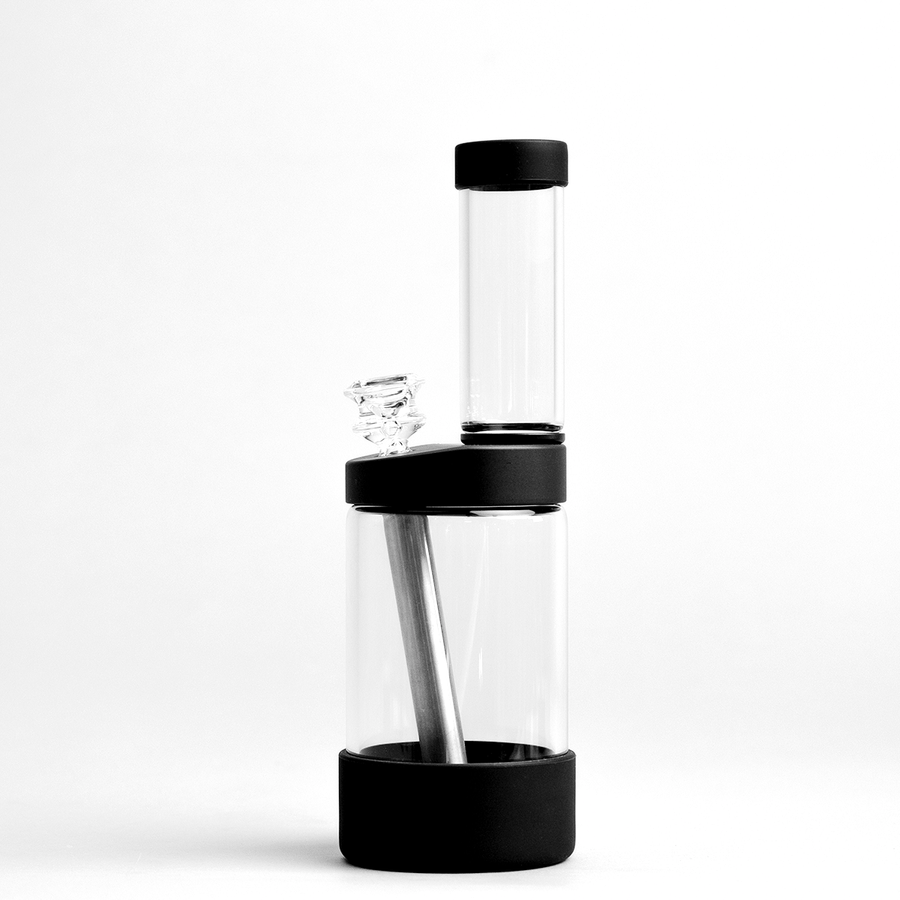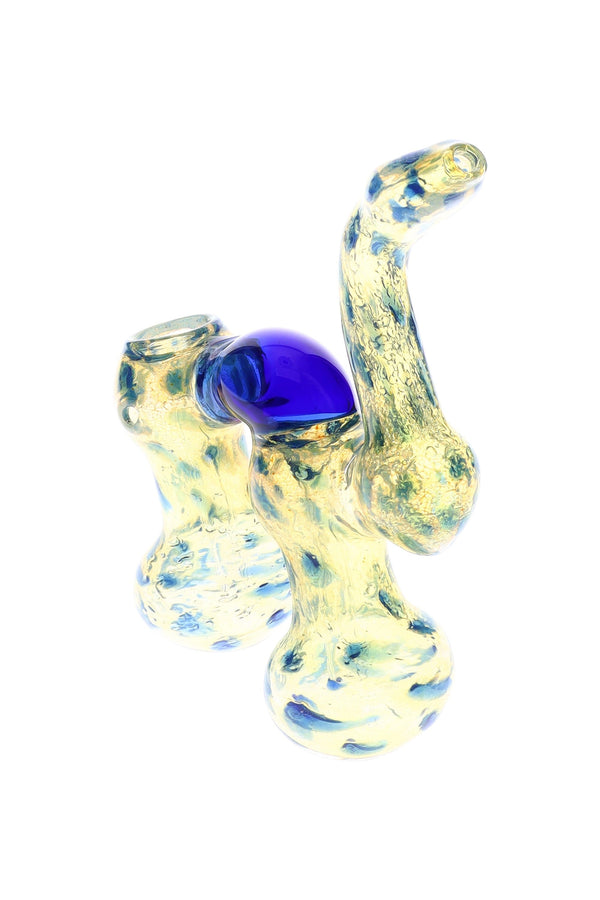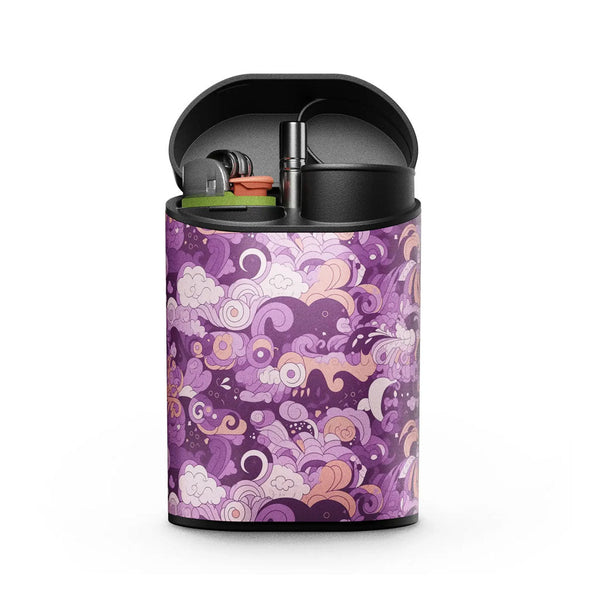What is Mad Honey: A Guide to the Intoxicating Effects and Dangers

Mad honey might sound intriguing, but its effects can be dangerous if misunderstood. Many curious users explore it for unique experiences, only to face unexpected and sometimes harmful outcomes.
This makes understanding its properties essential before considering consumption.
Mad honey contains grayanotoxins, toxic compounds from rhododendron nectar. These toxins cause both hallucinogenic effects and serious health risks. With a history spanning thousands of years, this honey has been consumed for medicinal use, recreation, and even as a weapon in ancient warfare.
This guide explains what mad honey is and uncovers its intoxicating effects and dangers. It offers readers the knowledge needed to make informed decisions about this rare substance.
Keep reading to learn the truth behind mad honey's allure.
What is Mad Honey?
Mad honey is a unique type of honey made from the nectar of rhododendron flowers. It contains a natural neurotoxin called grayanotoxin, which creates both intoxicating and potentially harmful effects.
Origin and production
This honey comes from regions like the Black Sea in Turkey and the Hindu Kush Himalayas in Nepal. Bees collect nectar from rhododendron flowers, which contain grayanotoxins—a natural toxin.
Higher concentrations of this compound appear during dry spells or when bees focus on a single hive's production at high elevations.
Farmers harvest this "toxic honey" using traditional methods passed down for generations. In these areas, skilled beekeepers ensure careful handling to avoid contamination. Though rare, smaller-scale production happens in some parts of the eastern United States as well, making it a sought-after product worldwide.
“Its unique origins make it both fascinating and risky.”
Grayanotoxins in mad honey
Grayanotoxins in mad honey come from nectar gathered by bees from Rhododendron plants. These toxins interfere with sodium ion channels in the body, stopping them from properly closing.
This disruption can cause a range of symptoms such as dizziness, nausea, vomiting, blurred vision, and even seizures. The compounds also slow the heart rate (bradycardia) and lower blood pressure (hypotension).
In severe cases, arrhythmias or life-threatening conditions might occur.
Small doses may trigger mild effects like lightheadedness or hallucinations. Larger quantities can lead to serious health risks associated with grayanotoxin poisoning. Consuming toxic honey has historically been used recreationally for its intoxicating effects but poses significant dangers if not handled carefully.
Understanding these risks is crucial for anyone considering trying mad honey.
Historical Context of Mad Honey
Ancient civilizations used mad honey for its unique effects during rituals and warfare. Historical records highlight instances where this intoxicating substance played pivotal roles in significant events.
Use in ancient cultures
Soldiers in 401 BCE under the Greek leader Xenophon encountered mad honey. After consuming it, they became disoriented, vomited, and experienced severe diarrhea. The psychoactive honey caused temporary incapacitation but no fatalities.
In 65 BCE, King Mithridates weaponized mad honey during a battle with Roman soldiers. He left toxic honey along their path, leading to mass poisoning and weakening of his enemies. This tactic showcased its potential as an ancient poison in warfare.
The men who ate the honey lost their senses. – Xenophon
Notable historical accounts of consumption
In 946 CE, Queen Olga of Kiev used mad honey against her enemies in a cunning plan. She offered fermented mad honey to Russian forces during a feast, causing severe intoxication. The poisoned state left them defenseless and allowed her allies to kill around 5,000 soldiers with ease.
A similar event occurred in 1489 CE when Tatars consumed mead made from toxic honey. This drink contained grayanotoxins from rhododendron nectar. The intoxicating effects led to mass poisoning, killing roughly 10,000 individuals.
These accounts highlight the dangerous potential of this lethal honey throughout history.
Regions Known for Mad Honey
Certain areas have gained fame for producing mad honey due to the abundance of specific rhododendron plants. These regions offer unique conditions that allow bees to create honey with intoxicating and toxic properties.
Black Sea region of Turkey
The Black Sea region of Turkey serves as the world’s most renowned source of mad honey, locally called *deli bal*. Beekeepers here rely on natural honey production techniques. Rhododendron plants flourish in this area, producing nectar rich in grayanotoxins, which gives the honey its intoxicating properties.
Sustainable harvesting practices influence annual mad honey output. This ensures minimal harm to both bees and their environment. The region has perfected traditional beekeeping methods over generations, making it a hub for toxic yet sought-after hallucinogenic honey.
Hindu Kush Himalayan region
Himalayan honey from the Hindu Kush Himalayan region comes from giant honey bees (*Apis laboriosa*). These bees thrive at high altitudes ranging from 1,200 to 4,000 meters (3,900-13,100 feet).
Honey harvested here is known for its toxic properties due to grayanotoxins. This high-altitude honey can cause hallucinogenic effects when consumed in small amounts.
Nepalese honey harvesting has seen challenges with a reported 70 percent annual reduction of bee populations on Nepal's cliffs. The decline raises concerns about sustainability and beekeeping practices in these regions.
Such toxic honey holds cultural significance but also brings risks that require careful use and understanding.
Other global areas of production
Mad honey appears in rare instances across the eastern United States. These occurrences result from bees pollinating rhododendron plants, which contain grayanotoxins. The toxic honey produced in these regions remains scarce compared to well-known areas like Turkey and Nepal.
South Korea imported around 8,000 kilograms of mad honey from Nepal between 2003 and 2004. This large-scale import ended with a ban in 2005 due to safety concerns. Other small-scale production spots exist but do not match the prominence of regions near the Black Sea or Himalayan areas like Nepal’s slopes.
Intoxicating Effects of Mad Honey
Mad honey interacts with the body in unique and intense ways due to its chemical composition. Its effects have intrigued users seeking unusual sensory experiences.
Hallucinogenic properties
The hallucinogenic properties of mad honey come from grayanotoxins found in rhododendron nectar. These toxins disrupt normal nerve signals, leading to altered consciousness and psychotropic effects.
Users may experience vivid hallucinations, delirium, or euphoria after consuming small amounts.
In ancient cultures, people added mad honey to alcoholic drinks for its mind-altering effects. Even today, it causes sensations similar to mild drug intoxication. Symptoms like impaired cognition and a dreamlike state make it appealing yet risky for adventurous users seeking an altered state of consciousness.
Physical symptoms of consumption
Mad honey consumption often triggers dizziness, nausea, and vomiting. Many users also report bradycardia (slow heart rate) and hypotension (low blood pressure). These physiological reactions result from grayanotoxins interfering with the body’s nervous system.
In severe cases, symptoms can escalate to alarming conditions like complete atrioventricular block or myocardial infarction. Some individuals may even experience Wolff-Parkinson-White syndrome, a rare but dangerous heart rhythm disorder.
These harmful consequences make monitoring intoxicating effects essential after consumption.
Dangers and Risks of Mad Honey
Consuming mad honey can lead to serious health issues due to its toxic properties. Understanding the potential risks is critical before experimenting with this unusual substance.
Potential for poisoning
Mad honey contains grayanotoxins, which can disturb the body’s normal functions. Ingesting even small quantities may lead to symptoms like nausea, dizziness, vomiting, and low blood pressure.
Larger doses can trigger severe effects such as irregular heart rhythms or loss of consciousness.
Cases of poisoning vary by region and toxin levels in the honey. A review of 1,199 cases reported no fatalities. However, from 2007 to 2012 in China, mad honey contaminated with *Tripterygium hypoglaucum* caused a mortality rate of 25.8%.
Overdose risks highlight the dangers associated with toxic honey consumption for recreational use or traditional remedies.
Warning signs of overdose
Overdosing on mad honey can lead to dangerous physical and mental symptoms. Identifying the warning signs early is crucial to avoid severe health risks.
- Dizziness can occur shortly after consuming even a small amount of toxic honey. This symptom often worsens without intervention.
- Blurred vision warnings are common and may make it hard for individuals to focus or see clearly.
- Bradycardia effects include an abnormally slow heartbeat, which might feel unsettling or cause fatigue.
- Hypotension symptoms arise as blood pressure drops significantly, leading to fainting or weakness.
- Seizure risks increase with larger doses, posing life-threatening complications if untreated.
- Cardiac complications like rhythm disorders may develop, making the heart beat irregularly or erratically.
- Nausea and vomiting often follow ingestion due to irritation caused by grayanotoxins in the honey's composition.
- Sweating heavily or feeling clammy are additional signs that the body is reacting poorly.
- Chest pain might occur as toxicity impacts cardiovascular functions, which could require immediate care.
- Confusion or an altered mental state can emerge, signaling neurological effects from poisoning.
Medicinal and Traditional Uses
Many cultures use mad honey for its potential healing properties. People rely on it in traditional practices to address specific health concerns.
Perceived health benefits
Mad honey has been used as a traditional remedy for centuries. Cultures in regions like the Black Sea and Himalayan areas valued it for its therapeutic uses. People sought its perceived health benefits to address various ailments, including gastrointestinal issues and hypertension.
Its natural compounds made it an integral part of herbal medicine practices.
The honey also gained recognition for its aphrodisiac properties. Traditional healing systems included it in remedies meant to boost libido and enhance vitality. Though respected in folk medicine, users must consume it cautiously due to risks of poisoning from high doses.
Cultural significance
Consumed as a recreational and medicinal substance, mad honey holds deep roots in traditional practices. In Turkey, it has long been valued as a tonic remedy. Its use reflects the historical interplay of nature and healing in ancient cultures.
Indigenous communities prized this unique honey for its perceived health benefits and intoxicating effects. This ties to ethnopharmacology, where plant-based medicine connects with traditional healing practices.
Folk remedies have highlighted its role in holistic health approaches over centuries. Some regions still incorporate it into local herbal medicine traditions for its believed therapeutic properties.
It illustrates how natural remedies remain woven into cultural identities. Beyond science, mad honey symbolizes the link between humans and their environment through indigenous healing methods passed down generations.
Diagnosis and Treatment of Mad Honey Poisoning
Doctors identify mad honey poisoning through physical symptoms and patient history. Prompt medical treatment helps manage the toxic effects efficiently.
Identifying symptoms
Identifying the symptoms of mad honey poisoning is crucial for timely intervention. Symptoms often appear shortly after consumption and can range from mild to severe.
- Confusion or dizziness can occur due to the hallucinogenic effects of grayanotoxins. Users may feel disoriented.
- Bradycardia, a slower-than-normal heart rate, is a key physical indicator. It might cause fatigue or fainting in some cases.
- Hypotension, or low blood pressure, often results from toxic honey consumption. Lightheadedness is a common outcome of this condition.
- Nausea and vomiting frequently develop soon after ingestion. This is an early warning sign of poisoning from grayanotoxin exposure.
- Sweating excessively can also signal mad honey toxicity. This symptom may accompany weakness and chills.
- Shortness of breath might affect users with more severe reactions, leading to difficulty in breathing.
- Seizures may occur in rare cases if the poisoning escalates without treatment.
- Chest pain and irregular heartbeat are serious signs that require immediate medical care.
Recognizing these signs quickly can prevent complications and ensure proper treatment for mad honey intoxication.
Medical intervention and care
Mad honey poisoning can cause serious symptoms and requires prompt care. Treatment focuses on addressing symptoms and ensuring recovery.
- Doctors often administer saline infusions to stabilize blood pressure and manage dehydration caused by grayanotoxin poisoning.
- Temporary pacemakers are used in severe cases to regulate abnormal heart rhythms from mad honey toxicity.
- Symptoms like dizziness, low blood pressure, or fainting typically subside within hours to days after treatment begins.
- Medical care for mad honey intoxication includes close monitoring to prevent complications such as bradycardia or cardiac arrest.
- Patients experiencing nausea or vomiting may receive medications to ease discomfort while recovering.
- Rapid intervention reduces risks of long-term damage, especially in cases involving large doses of mad honey.
- Proper diagnosis and management of mad honey toxicity rely on recognizing key signs like sweating, confusion, and chest pain early on.
Conclusion
Mad honey offers a mix of intrigue, risk, and cultural history. Its intoxicating effects can draw interest, but the dangers demand caution. Understanding its origins and properties is essential before consuming it.
Awareness of potential health risks ensures safer exploration of this unique substance. Always approach it with knowledge and care.
FAQs
1. What is mad honey?
Mad honey is a type of honey made from the nectar of rhododendron flowers. It contains grayanotoxins, which can cause intoxicating effects and health risks.
2. Why does mad honey have intoxicating effects?
The presence of grayanotoxins in rhododendron nectar gives mad honey its psychoactive properties, affecting the nervous system when consumed.
3. Is consuming mad honey dangerous?
Yes, eating too much mad honey can lead to dizziness, nausea, low blood pressure, or even serious heart problems in some cases.
4. How can people safely use mad honey?
To avoid dangers, consume small amounts while being aware of its potential effects on your body. Always consult a doctor if unsure about safety concerns.






![Vessel Helix Pipe [Copper] - Headshop.com](http://www.headshop.com/cdn/shop/files/ad3c0443-b76d-4fe5-84b8-a617dd50a950.jpg?v=1747419387&width=900)
![Vessel Helix Pipe [Copper] - Headshop.com](http://www.headshop.com/cdn/shop/files/7b0e06e3-9106-4684-80e4-408362c34085.jpg?v=1747419388&width=1000)
![Vessel Wood Vape Pen Battery [White/Beechwood] + - Headshop.com](http://www.headshop.com/cdn/shop/files/4ecd5d0f-363a-454e-a7a0-229fb93bf456.jpg?v=1725470645&width=900)
![Vessel Wood Vape Pen Battery [White/Beechwood] + - Headshop.com](http://www.headshop.com/cdn/shop/files/d232e493-09e6-4574-b44c-3e2bde9425b4.jpg?v=1725470647&width=1000)


![Vessel Compass Apex Charger [Black] - Headshop.com](http://www.headshop.com/cdn/shop/files/f10e6bf4-6ce7-4a59-a50e-a4184f069754.jpg?v=1729115238&width=900)
![Vessel Compass Apex Charger [Black] - Headshop.com](http://www.headshop.com/cdn/shop/files/dce98c70-346c-405f-aca8-d59c7feed96d.jpg?v=1729115240&width=1000)

![Vessel - Air [Jade] Vessel - Air [Jade]](http://www.headshop.com/cdn/shop/products/7cd436a1-b1f0-4e01-9e52-050ad7140b56.png?v=1679506090&width=600)
![Vessel - Mill [Beechwood] Vessel - Mill [Beechwood]](http://www.headshop.com/cdn/shop/files/MILL_GUNMETAL_BEECH_COLLAPSED_FRONT_800.jpg?v=1744308513&width=600)
![Vessel - Cone [Onyx] Vessel - Cone [Onyx]](http://www.headshop.com/cdn/shop/products/6f51074a-2173-4ab4-876d-22a84764eb5d.png?v=1679517316&width=600)
![Pipe by Vessel [Rose Gold] Pipe by Vessel [Rose Gold]](http://www.headshop.com/cdn/shop/files/Pipe_Rose_Gold_Closed.jpg?v=1744306576&width=600)

![Vessel Helix Pipe [Black] - Headshop.com](http://www.headshop.com/cdn/shop/files/Pipe_Black_Angle.jpg?v=1744306153&width=900)
![Vessel Helix Pipe [Black] - Headshop.com](http://www.headshop.com/cdn/shop/files/Pipe_Black_Closed.jpg?v=1744306155&width=1000)
![Vessel Compass Rise Vape Bar [Crimson] - Headshop.com](http://www.headshop.com/cdn/shop/files/fc3fd52a-2783-4fac-bd38-bc4f2013a889_5466b32d-da71-427f-8737-bf7d7f5f2c77.jpg?v=1735253136&width=900)
![Vessel Compass Rise Vape Bar [Crimson] - Headshop.com](http://www.headshop.com/cdn/shop/files/66947a99-195c-4deb-b29e-03443ebebd5a_32c35e3d-ba1b-4d4d-a879-3886d37bddf7.jpg?v=1735253136&width=1000)


![Vessel - Ember [Gold] Astray - Headshop.com](http://www.headshop.com/cdn/shop/files/20220106_EMBER_BRASS.jpg?v=1744309601&width=900)
![Vessel - Ember [Gold] Astray - Headshop.com](http://www.headshop.com/cdn/shop/files/20220106_EMBER_BRASS_WITH_AIR.jpg?v=1744309601&width=1000)








![Pipe by Vessel [Gunmetal]](https://cdn.shopify.com/s/files/1/0585/8462/9443/files/Pipe_Gunmetal_Angle_500x500.jpg?v=1744306453)













